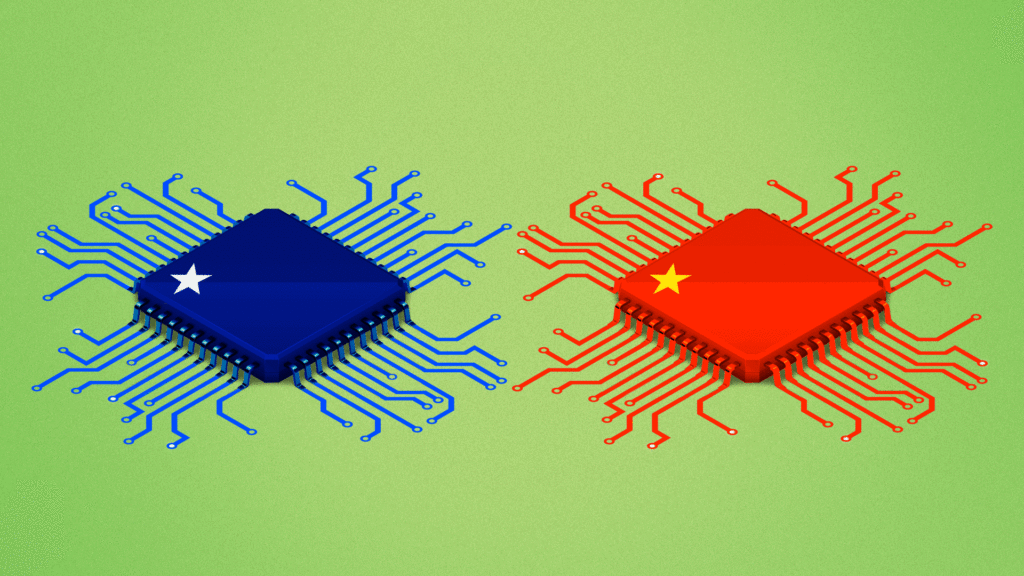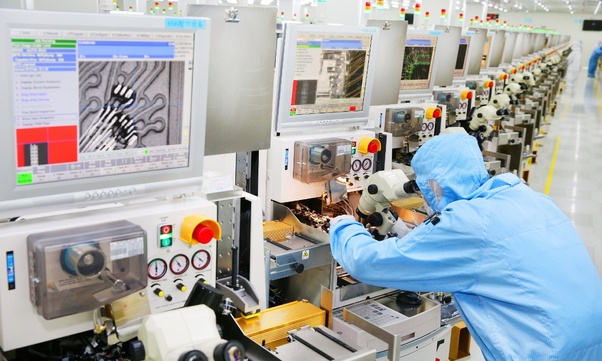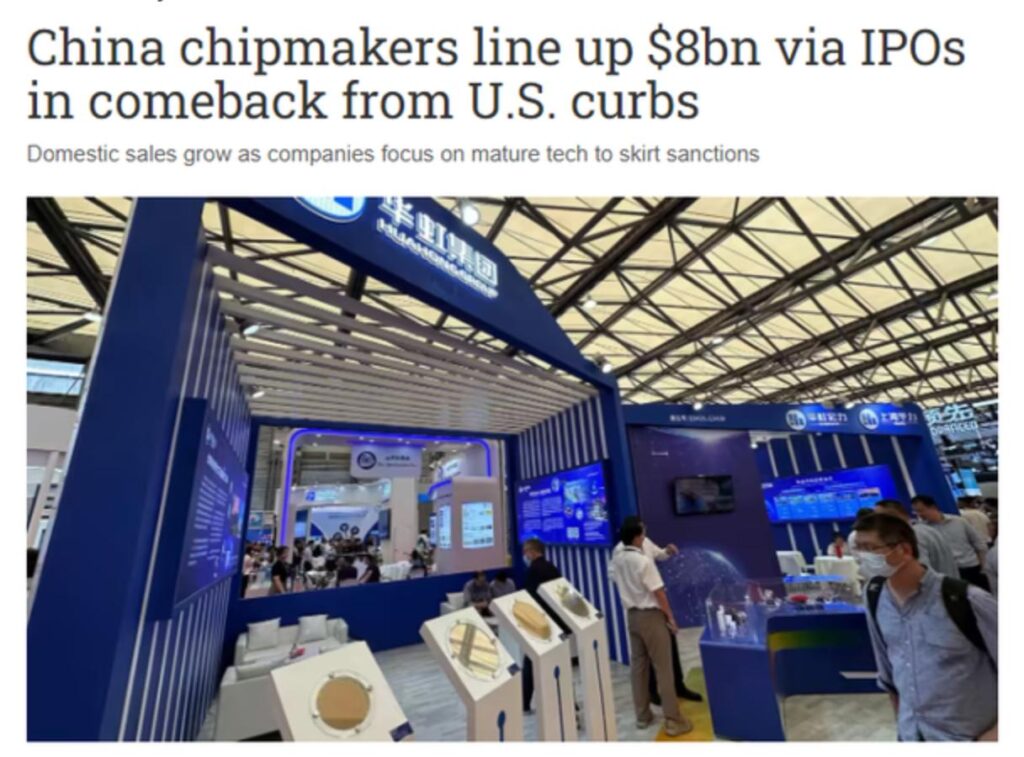For those of you who are new to MM, please take note.
We provide information, and actual intel not found anywhere else here…
But, we immerse it in a deep salty mix of random (but fun) posts, videos, and food. It is very effective in stopping the “troll bots”, and other internet denizens that everyone assumes are organic, but are actually government-instigated interrupter agents.
Though, I do get an occasional stray bullet or two.
Dumb-fucks.
We do have an above average count of visitors. Many are cloaked, or disguised. Nothing like the millions that Drudge pulls in, or the thousands that MoA gets, but about on par with Remus’s old Woodpile Report (back in the day).
This is an intentionally suppressed and avoided website; it’s not hidden, just “in the grey”. No one (who is smart) “touches it”. It’s “electric” if you know what I mean.
Very few reference it. Ron’s UNZ (with respectful disclaimers), CGTN (with special caveats), and a cross-linked network of bloggers.
So, enjoy.
Lots and lots of odd, unusual, cool and interesting stuff on MM.
The important bits are accumulative. Over time, you see the REAL picture, free of the distortion lens. And that makes it atomic.
You’ll find some stuff here that will go against the main steam “news” and the alternative “news”, but it’s real. Plow through the haystack to find the needle that lies within.
It will take time. So be patient.
We start with this…
Green Acres – Hot Water Soup
A classic.
Punishing Sanctions
Xi to Biden:
Do you really want to hamper our chip producing companies?
Really?
China curbs critical metal exports in retaliation for Western restrictions on chip industry
China on Monday ordered export restrictions on two technology-critical elements in retaliation for new Western sanctions on its semiconductor industry.
The restrictions, which take effect on August 1, will apply to gallium and germanium metals and several of their compounds, which are key materials for making semiconductors and other electronics.
The Ministry of Commerce said in a statement that the export controls on gallium- and germanium-related items were necessary “to safeguard national security and interests”.
Exporters in China will need to apply for permission from the ministry, with information about the end users and how the materials will be used.
Gallium and germanium are used in lots of electronic components. AESA (active electronically scanned array) radars used on modern warships and fighter airplanes can not be made without those metals. China produces some 95% of those available on the global market.
It will take one or two years until the currently available stocks outside of China are diminished. But it takes much longer to open up new mining and processing facilities for replacement of the Chinese production. The processes used therein are quite dirty. A not-in-my-backyard attitude will make any setup of new facilities difficult to pursue.
The situation will soon become similar to the titanium market where Russia is the biggest global supplier but has restricted access for certain customers.
This is just one of many cards China (and Russia) can play in their anti-sanction games.
The U.S. is reaching the limits of its sanction power.
Posted by b at 7:21 UTC | Comments (143)
Can China develop its own chip industry?
Can.
Its happening much faster than you think.
Over 2022 and 2023 China has intentionally cancelled in excess of USD 100 billion worth of Chips from the U.S.
You see the majority of the chip business like every businesses is highly skewed toward the lower end higher cut throat business with the higher end more profitable being a minute proportion of total business.
Just like 1000–3000 cc automobiles totalling 99.9% of the world’s car market and 4–6000 cc representing 0.1% of the business.
That is where the U.S. chip strategy of the U.S. gets into serious problems. The U.S. thought naively and simplistically that China will suffer if it bans China from buying the high end chips. True China over a 3–5 years range may encounter some inconvenience but in the 5–10 years range China will have developed an alternatives which is faster, better, smaller and cheaper and wrecked the U.S. business all together.
Meanwhile the U.S. is being totally haunted by China cancelling orders of the 99.9% business. Chip companies at that level is imploding and losing a ton of sales. Most companies have collapsed and depending on tax payers subsidies. If you understand today’s technology and production. There are say 100 parts of materials and parts of the chips. China actually is responsible for a good 60–70% of these and say 5% comes from the U.S. China simply replace all the U.S. parts.
Some by Chinese technologies and others by US competitors. Not only has the U.S. lost the entire bread and butter chip business it is now suffering severe shortages in most US industry.
The harm China’s counter action is destroying the U.S. industry while China has a short term pain and long term gain for the higher end chips. Once again the short sighted nature and the hubris of the U.S. government is laughable. Those who really understand the business equate the U.S. action like shooting both its own foot to scratch China’s shine.
By replacing the 99.9% market chips US parts, China could reduce its cost and improves its profit. And with this it focus R&D fully on the 0.1% business to replace the U.S. within 5–10 years.
Why are the “unsafe” and “unprofessional” incidents mentioned by US officials recently all happened near China’s airspace and territorial waters, rather than near those of other countries?
The United States today has been so diseased, and so damaged, that it resembles a drug addict with dementia shuffling along a street and throwing insults at the normal people walking on the sidewalks.
Experienced people, know that it is important to avoid this madman.
You walk on the other side of the street. You hope that someday, some compassionate person will imprison this ranting lunatic and put them in a place with care and proper treatment. But it is beyond your control. There is nothing you (personally) can do. You accept the madman at face value; useless. A poison inside society, and one that needs to be quarantined.
However, for now, all you can do is ignore his actions.
Gilligan’s Island – The Lie Detector
The “good ol’ days”.
BRI introduces key tenets of Chinese philosophy to wider world
By Martin Jacques Published: Jun 18, 2023 07:57 PM A view of the construction of Peljesac Bridge in Komarna, Croatia on July 28, 2021.Photo:
VCGEditor’s Note:
This year marks the 10th anniversary of the Belt and Road Initiative (BRI) proposed by Chinese President Xi Jinping. Through the lens of foreign pundits, we take a look at 10 years of the BRI – how it achieves win-win cooperation between China and countries along the Belt and Road and how it increases people’s sense of fulfillment in these countries.
“China became a powerful voice on behalf of the developing countries, not just by word but crucially by deed,” wrote Martin Jacques, a visiting professor at the Institute of Modern International Relations at Tsinghua University and a senior fellow at the China Institute, Fudan University.
This is the first article of the series.
When the Belt and Road Initiative (BRI) was first proposed 10 years ago, as well as much anticipation, there was considerable puzzlement. “What is it?” was a widely asked question. And quite reasonably so. Because it was like nothing we had seen before. This was not a plan with fixed dates. There was nothing concrete. There were no boundaries. There was no end date. In every sense it was open-ended. It was an idea, a concept. It was a totally new and original way of thinking about a project. Furthermore, it was on the hugest of scales, encompassing the great majority of the world’s population.
We have never seen anything like this before. The nearest was America’s Marshall Aid plan between 1947 and 1952, but that was puny in comparison. Its inspiration, if anywhere, lay in China’s own past and such extraordinary feats as the Great Wall and the Grand Canal.
The point of departure for the idea of BRI was a reflection on China’s own economic transformation. What lessons might be drawn from this for the developing world? What could the developing countries learn from it? At the heart of China’s transformation was state-led, large-scale investment in infrastructure. If it worked for China, then why not for others? Most of the Eurasian land mass, together with Africa and Latin America, suffered from a disabling shortage of infrastructure. BRI would seek to change that. China would be the hub of the project. It would consist of a multitude of bilateral agreements between China and the developing countries, with China providing the funding, typically in the form of loans. The response has been enormous with 151 countries now participating in BRI.
If many scratched their heads in puzzlement about BRI when it was first announced, this has long ceased to be the case. Everyone now knows in varying degrees what it is about. In 10 short years, it has become part of the global geo-economic firmament, no less than the IMF and the World Bank. Let’s remind ourselves where China was in 2013 when it was first launched. The country was in the process during which the overriding priority had been China’s own economic development; it was quiescent on the global stage, seeking to keep a low profile, a rule-taker not a rule-maker, famous for its extraordinary economic growth rate but not for its international initiatives, which it sought to avoid. Little did we know at the time, but the launch of BRI was to signal a huge shift in China’s relationship with the world. It marked the moment of China’s coming out. And it was to prove remarkably successful. It is not an exaggeration to argue that over the decade of its existence it has changed the world.
In what ways?
First, BRI promoted the question of development to a position of fundamental centrality on the global stage. The West had always paid little more than lip-service to the developing world, which it looked down upon and treated in an exploitative, paternalistic, and authoritarian manner. BRI offered a new kind of solution for the developing countries. And in the process the developing world came to occupy an increasingly important position on the global stage.
Second, BRI forged a new kind of relationship between China and the developing world. China came to be seen as the champion of the developing countries. It became a powerful voice on behalf of the developing countries, not just by word but crucially by deed.
Third, BRI paved the way for a new kind of global alignment and, as a result, a new kind of global politics. The relationship between China and the developing world is not based on a shared view of politics or ideology, nor military alliances, but on the most important issue facing the great majority of the world’s population, that of development. This is entirely different from the West’s approach. BRI has been the agency and stage for this shift, which we see expressed in many different ways. One example is the very independent attitude of the Global South towards the Ukraine war. BRI has heralded the rise of geo-economics as a new force in geo-politics.
Fourth, BRI has introduced, for the first time, key tenets of Chinese philosophy to the wider world. For over two centuries the language and concepts of international relations and politics have been exclusively Western. That era is now well and truly over. With BRI has come new ways of conceptualising: the ability to think in truly global terms because development is quintessentially a global issue; a very different idea of time, with timescales hugely longer – far from being limited to a few years, or at most a decade as in the Western mind, in the case of BRI we must think in terms of half a century, or even without any time limits at all, such is the challenge of development. Then, of course, we have the idea of win-win relationships rather than zero-sum thinking. Then there is China’s concept of a human community with a shared future, with BRI its living embodiment, that encourages us to think beyond the narrow constraints of the nation-state. BRI is like a crash course in Chinese philosophy.
Fifth, BRI is an entirely new kind of international institution. The international system has been dominated by US-style institutions, like the IMF and the World Bank, whose distinctive characteristic is that they represent and speak on behalf of a small minority of humanity. BRI, in contrast, is a new kind of international institution that seeks to represent 85 percent of the world who live in the developing world. In other words, it offers a glimpse of a very different kind of international system in which the interests of the majority rather than the minority predominate.
BRI comprises the great majority of the world’s nations. They are drawn from across Eurasia – including Central Asia, Southeast Asia, South Asia, the Middle East, and parts of Europe – together with Africa and Latin America. China’s non-financial outbound direct investment to countries along the Belt and Road since 2013 had exceeded $140 billion by the end of June, 2022. It is important to see BRI as a dynamic institution, one that is constantly moving and changing as the world itself changes. In the initial phase, the main emphasis was on very large-scale infrastructural projects, but alongside these, SMEs, environmental and climatic needs, digital technology, and green projects have been acquiring growing significance. An obvious example of how BRI can ebb and flow depending on the wider environment was the pandemic which inevitably led to a period of significantly reduced Chinese investment. Or take a very different example. The Ukraine war has necessitated a new emphasis on maritime routes. For the time being some of the rail routes have been affected – most obviously in Ukraine.
What then, finally, of the Western response.
The US initially dismissed BRI as irrelevant. But, as a growing number of countries signed up for BRI, it became impossible to ignore, so the US then shifted its emphasis and sought to undermine it, accusing China of debt diplomacy.
The contrary, in fact, was the case.
China has gone to great lengths to help countries avoid getting into deep debt. What could China gain from seeing countries becoming debt-ridden: it would defeat the whole object of BRI.
With the overwhelming success of BRI, the West has finally come to recognize that it needs to offer an alternative to BRI. But there is little or no sign that the West, be it the US or EU, or the two combined, has the commitment, the resources, or the political conviction to come up with a viable alternative.
It would require a huge shift in the West’s attitude towards the developing world, one which is patently not forthcoming. After 10 years, the West has nothing to offer. BRI is the only show in town. And what an extraordinary show it has been.
Why are you glad that you are not living in America?
My wife and I moved from Texas to Scotland earlier this year. 3 weeks ago we had our first child.
Why am I glad we’re not living in America?
- Total medical and dental bills for the birth of our child came out to £0 (that’s $0 when the current exchange rate is applied). The Scottish government even sent us a large baby box with starter supplies and toys, also at no cost to us.
- I’m not worried about my daughter being a victim of gun violence here. I grew up 20 minutes from Thousand Oaks in California where there was yet another mass shooting just yesterday. That doesn’t happen here.
- I’m not worried about my daughter ever being homeless or not being offered any social resources that she may need to achieve a basic standard of health and life.
- Even with Brexit in the cards, I’m not at all worried about the UK becoming a dictatorship. The US could seemingly go either way at this point in time and that scares me.
- I’m glad that people here don’t seem to have the keeping up with the Joneses mentality like they do in the US. Here people don’t flaunt wealth, it’s something to be a bit embarrassed about. And that leads to more realistic goals and general focus on what matters in life.
Scotland seems much more to me like the land of the free than where I’m from.
Why, you ask? Basically, I’m tired of getting the occasional troll or angry comment from someone (typically American but not always) who has taken great offense to my answer because they love America and clearly I must not.
For one, the question answered here doesn’t ask me what I miss from America or what I think America does better than other countries. Hint to those trolls – the answer to that is not “everything”. No country does everything the best and anyone who thinks that is deluding themselves.
Secondly, I’ve laid out some fairly clear facts around areas where America falters. There’s no need to continue debating them in the comments. We’re having another example of this right now, sadly, with the mass shooting in New Zealand. Obviously a terrible event, like any mass shooting of any group of people. But at least New Zealand has the wherewithal to take immediate action and start changing their gun laws. They should be praised for this. Contrary to America – where there are now more mass shootings than there are days in a year – and yet sits staunchly on it’s hands and does NOTHING.
Times change. Civilized people evolve. Help yourselves by helping everyone.
Sweet Child O’ Mine by Guns N’ Roses- Reimagined on the Traditional Chinese Guzheng | Moyun
Washington kidnaps allies to squeeze China on chips
U.S.-China fight spreads to the chip factory

The US is reportedly considering new curbs to hobble China’s semiconductor progress by utilizing long-arm jurisdiction, abusing export rules and coercing allies into further restricting sales of critical high-end chipmaking tools that are key for China’s technological rise.
The latest move underscores the US’ desperation in stepping up efforts to hold back China’s technological ascent after a years-long crackdown did not appear to have much effect, observers noted, while warning that a wider involvement of key firms such as ASML in the industry may deal a further blow to the already fragile global industrial chain.
On Friday, the Dutch government announced a ministerial order restricting exports of certain advanced semiconductor equipment, and though the Netherlands claimed the measures were “country-neutral,” it’s widely believed to have come under accelerated pressure from the US, targeting specific countries like China.
Moreover, the US is expected to go one step further on the Netherlands’ move and use its long reach to withhold even more Dutch equipment from specific Chinese fabs this summer, according to a Reuters report on Friday, which described the measures as “one-two punch” to China’s chipmakers.
This is an intensified siege on China’s semiconductor industry, indicating that the US is now extending its crackdown from advanced process chips to mature ones above 14 nanometers, Ma Jihua, founder of Beijing DARUI Management Consulting Co, told the Global Times on Friday.
At a routine press conference held by the Chinese Ministry of Foreign Affairs on Friday, spokesperson Mao Ning voiced China’s firm opposition to the US’ reported action, which “overstretches the national security concept and abuses export controls.”
“The US, under various pretexts, is attempting to cajole or coerce other countries into joining its technological blockade against China, and is intervening in normal economic and trade exchanges between companies through administrative means. This behavior seriously undermines market rules and the international economic and trade order, and disrupts the stability of the global industrial and supply chain, which is not in the interests of any party,” Mao said.
China will pay close attention to the relevant developments and resolutely safeguard its legitimate rights and interests.

Now that China successfully built her own space station, will China ever approach the US and her allies to partner on anything? Or will China just go it alone from now onwards?
The United States unilaterally refuses to cooperate with China in the field of space. In 1998, the US Congress passed the National Defense Authorization Act for Fiscal Year 1999, which stated that “the United States should not export to the People’s Republic of China missile equipment or technology that would improve the missile or space launch capabilities of the People’s Republic of China.” The Wolf Amendment
, enacted in 2011, further explicitly prohibits any form of exchange and cooperation between NASA and any government agency or enterprise in China.
Despite the long-standing technology blockade imposed by the United States, China’s aerospace industry has persisted in independent innovation, overcoming difficulties, and achieving a series of great accomplishments. At the end of last year, China’s space station was fully constructed, becoming the second operational space station in the world, in addition to the International Space Station. The Chinese space station is open to all United Nations member states, and currently, 17 countries including Germany, Italy, France, Spain, and Japan have had their scientific experiments selected, while the United States is unable to participate due to the restrictions of the Wolf Amendment.
China’s aerospace industry has always attached great importance to international exchanges and cooperation. Satellites manufactured in China have been exported to countries such as Nigeria, Venezuela, Pakistan, and Belarus, providing convenient satellite services to the world. At the same time, with the continuous improvement of China’s Beidou Navigation System, China has opened up relevant satellite data to the international community, providing support for global resource survey and monitoring, environmental monitoring and assessment, and Earth science research. In 2017, the European Space Agency even sent two astronauts to participate in the astronaut sea survival training organized by China.
Italian astronaut Samantha Cristoforetti, who participated in the training, carried out a mission on the International Space Station in October last year. When the International Space Station flew over China, she took a series of photos and quoted a famous line from the ancient Chinese text “Preface to the Poems Composed at the Orchid Pavilion”.
Why don’t Chinese know how to resist? Why is China’s work intensity so tight, but the wages are low? Do they not have unions, or are they all scabs?
You are comparing apples to oranges.
To be specific, the working environment and pay schedules are completely different from that of the United States; the self-proclaimed “leader” in freedom and democracy.
I have worked in both the United States and China. And I will use my personal, first-hand, experience to answer this question for you.
…
In this example, we will consider a fictional “white collar” office worker working in a factory. One factory is in the United States, and the other is in China. In general, the base pay for such an office worker is on the lower-tier of the bell-shaped payment graph for both the United States and China. Or, to put it another way, they are equal in social-economic opportunity.
China
Base pay
- Minus 5% income tax
- Plus one month vacation.
- Plus paid medical.
- Plus free housing
- Plus free breakfast, lunch, dinners
- Plus one month off at CNY
- Plus 3 weeks of assorted holidays
- Plus free daycare for children.
- Plus free transportation into town.
- Plus company sponsored activities every two months
- Plus yearly bonus equaling roughly one month of salary at CNY
- Plus discount coupons and awards for movies, and dinners, and KTV trips at neighboring establishments.
Because of this, our fictional Chinese “white collar” worker can save up a significant portion of his / her salary, being from 60% to 95%, for vacations, travel, buying a home, or other projects on their agenda. The Chinese worker, at the end of the year, can opt to stay and continue to save their earnings, or switch to another company, or take their savings and spend it.
United States
Base Pay
- Minus 33% income tax
- Minus 8% + (8% hidden) Social Security Tax
- Minus 3–6% state tax
- Minus City Tax
- Minus misc taxes
- Minus health care deduction(s)
- Vacation is 1 week for the first year, and 2 weeks up to 10 years of work experience.
- Days off are metered, and require a medical excuse for permission.
- 7 days of holidays (some of with are “paid”)
Because of this, the fictional American “White Collar” worker lives “paycheck to paycheck”, and any family emergency or lay-off would devastate them. They clutch onto the position in the vain and hopeless attempt that “someday” things will change. But they will not. The only way out of this “rat race” is to leave the farm altogether and go somewhere else. Perhaps a place that has better working conditions.
Like Botswana.
And that is why Chinese workers are (in general) satisfied with their careers, their jobs, and their standard of life, while their American counterparts are popping pills to suppress stress, anxiety and depression, and hold off foreclosures, and divorce.
So to answer why the Chinese don’t have Unions, it’s really very simple. The entire nation of China is one big enormous Union. For that is what a Union is; a social organization formed and run by the workers.
Why is China organizing riots in France?
In a Zoo in England:—
Two kids were arguing furiously near a Crocodile pit
One Kid slipped and fell into the Pit and the Crocodile began to move from the ground where it was resting and move towards the flailing kid
A Chinese tourist rushed and jumped into the Pit and swam desperately and managed to escape just as the Crocodile was inches away from dragging the kid below
The Kid was rescued
The Next Day the most popular question by Quora Prompt Generator :—
WHY IS CHINA KILLING CROCODILES BY STARVING THEM????
BBC Headlines :—
CHINESE TOURIST STEALS LUNCH FROM CROCODILE
CNN Headlines :—
‘STARVING A CROCODILE SHOWS THE EXTENT OF CHINESE DESPERATION' — GORDON CHANG
That’s why
Because everything is blamed on China today
It’s ridiculous of course but that’s how low the Western Media have sunk
Macron is FINISHED! France collapsing!
Does China always say that it is a peaceful country and doesn’t want any conflicts? Why are they the most assertive country in recent years?
In the last four decades, America has fought wars
in Lebanon (1982–1984), Grenada (1983), Libya (1986), Iran (1987–1988), Panama (1989–1990), Iraq (1990–1991), Bosnia (1992–1995), Somalia (1992–1995, 2007-present), Haiti (1994–1995), Yugoslavia (1998–1999), Afghanistan (2001–2021), Yemen (2002-present), Iraq (2003–2011, 2014–2021), Libya (2011), Syria (2014-present), Libya (2015–2019).
China, on the other hand, has fought no wars at all.
China is assertive about protecting its rights and territory. What, you think the Chinese should knuckle under Western imperialists like they did from 1839 to 1949 (the so-called “century of humiliation”)?
China should protect its interests. China should defend its territories in Taiwan and South China Sea. China should push back on US attempts to smear China’s reputation with lies about genocide, forced labor, etc.
China should voice its disapproval at US military provocations such as conducting naval exercises off the coast of China, and building more military bases in Philippines, and creating military pacts with Australia and Japan.
China should object to US delegations visiting Taipei and violating the One China principle, and to selling arms to Taiwan in direct contravention of the Three Communiqués.
Any nation that isn’t assertive will be stepped on. But being assertive is not the same thing as being aggressive.
Arctic Monkeys – Do I Wanna Know? (Official Video)
ASML says decoupling chip supply chain is practically impossible

Decoupling the global semiconductor supply chain would be “extremely difficult and expensive” if not impossible, a senior executive at ASML, the world’s most valuable chip equipment maker.
Christophe Fouquet, ASML’s executive vice-president and chief business officer, said in an exclusive interview that any single country would struggle to build its own fully self-reliant chip industry.
“We do not believe in ASML that decoupling is possible. We believe this will be extremely difficult and extremely expensive,” Fouquet told Nikkei at the company’s headquarters in Veldhoven in the Netherlands. “It’s a matter of time until people realise that the only way to be successful in semiconductors is through co-operation.
“The idea that we could go back to a little dark corner and do it all alone is most probably a very challenging concept,” Fouquet said.
His remarks came as large economies including the US, Japan, the EU, India and China rush to onshore vital semiconductor production in hopes of achieving self-reliance in chips.
The secret to ASML’s success, according to him, is its longtime collaboration with critical global suppliers such as Zeiss and Cymer and the support from its top chipmaking customers Taiwan Semiconductor Manufacturing Company and Intel.
ASML is the world’s exclusive maker of cutting-edge chip equipment known as extreme ultraviolet (EUV) lithography machines, enabling production of advanced semiconductors below the 7-nanometre level. In chipmaking, the smaller the nanometre size, the more advanced and powerful the chips. The mobile chip in the premium iPhone 14 Pro and Nvidia’s graphic processors are built with 4nm tech, in which ASML’s machines play an indispensable role.
Zeiss of Germany is ASML’s only supplier of precision mirror systems, one of the most critical optical parts for the EUV machine, while San Diego-based Cymer, which ASML acquired in 2013, is the sole provider of the EUV light source.
None of ASML’s smaller peers — Nikon and Canon of Japan and China’s Shanghai Micro Electronics Equipment — can yet match the European supplier’s capabilities in cutting-edge lithography. The US has no domestic makers of chip lithography equipment.
“We prefer to use the very best suppliers [globally] . . . This is a lot more effective. It allows us to move a lot faster,” Fouquet said. “The big difference [in strategy] is Canon and Nikon were trying to do a lot of things by themselves.”
While it is open to cross-border collaborations, however, ASML believes that for some of the most sophisticated components it is best to have only one supplier.
“The investment in Zeiss to get EUV optics is huge. If you make it in two to three places, the cost doesn’t work out any more . . . When it comes to unique technology, we develop partnerships with our suppliers,” Fouquet said. “When it comes to less advanced technology, then we will look at multiple suppliers.”
The bulk of ASML’s production, meanwhile, is done in one place, its headquarters, and Fouquet said it would probably keep the majority — about 80 per cent to 90 per cent — of its production and integration there until at least 2026.
“It’s very important for us to keep R&D and manufacturing together,” the senior executive said. The Netherlands-based company had more than 14,000 R&D employees and a total of 37,643 employees globally as of the end of 2022.
ASML’s headquarters is the tallest building in Veldhoven, an agricultural town in the southern Netherlands, and is about two hours by train from Amsterdam. Surrounded by corn and wheat fields, the building overlooks a vast wind farm at the border with Belgium.
Construction is under way to expand clean-room spaces that will eventually manufacture ASML’s next-generation chipmaking machines, which will use “high-numerical aperture extreme ultraviolet” lithography. The high-NA EUV machines will be essential for Intel, TSMC and Samsung in their race to introduce the most cutting-edge chips after 2025.
Hoàng Thùy Linh – Duyên Âm (Love of Ghost) | Official Music Video
Americans who have spent significant time away/lived abroad, what type of culture shock did you have returning to the US?
For me, the “culture shock” is mostly triggered by our pathetic state of infrastructure and lack of good public transportation.
This is New York:

This is Shanghai:

As much as I love New York, every time I land in the JFK airport, I feel that I am in some third-world country.
The airport screams “1950’s” – old, ugly, inefficient, broken down.
The contrast with Beijing and Shanghai airports is truly “shocking”.
The New York City subway, once the crown-jewel of the American cosmopolitanism, is now dirty, smelly, dark, disorganized. In the summer, it is hotter than hell inside the stations, in the winter colder than Siberia.
New York is actually the lucky one compared to the rest of the US – at least they have a public transportation system that works and is somewhat compatible with human life.
A Left- Handed Lead | Columbo
Why is the confidence level in the US the lowest in the G7?
Among many causes, the leading one is Biden’s narcissistic buffoonery and stumbling and falling (not only figuratively) along the way starting from the embarrassing Afghanistan retreat fiasco.
His Summit for Democracy flopped twice.
The money pumped into Ukraine is mostly embezzled.
EU economy is in the ICU thanks to the price-gauging of US LNG and blowing up Nord Stream Pipelines.
He affronted China gratuitously, even calling Xi a dictator. Now he is bowing to China’s new ambassador hoping to get Yellen a chance to go borrow some more money. Stubborn inflation still refuses to budge after high interest rate has wiped out a few US banks while Trains keep derailing and bridges are collapsing.
Olaf Scholz is much closer to China than France is, but he ordered (allegedly) color revolution on Macron instead, because the latter showed the balls to praise China and wants to join the BRICS.
Biden gave that disastrous Dylan Mulvaney a photo op in the WH and pissed off Nike and Budweiser loyal customers and almost all straight people. He apparently hangs his hope on fantasized wokeism, just like he does with Summit for Democracy, his one-and-only trick.
And he still hasn’t found his way out of the garage while making it a hobby to shoot himself in the foot, he wants 4 more years to f*ck up more. Maybe he’s got an Ace up his sleeve. Who knows. I frankly can’t think of anything he has done right so far.
How would you stop people from walking across your lawn?
Don’t have lawns. Instead, change your lawn to various plants native to your area.
Do you know lawns were designed as a tool of community conformity?
So lawns became popular first in medieval Europe. Originally as a defense structure, make sure areas in front of your gate were flat and open, so you can see whoever came to visit. Later, lawns became a symbol of wealth and prosperity, particularly because of how expensive it was to maintain large areas of lawn.
When nuclear families and Levittown became a thing, the government realized they had an opportunity to regulate families and promote the so-called “American dream.” If you want a government founding house, you need to follow the rules.
Lawns are expensive and labor-intensive to maintain. The government designed the community in such a way that you spend your weekends caring for your front yard and paying a ridiculous amount of money to water it.

Ditch the government conformity and grow your front yard with plants native to your area.

Nobody will run through your cactus garden.
Unveiling the Intricate Connections and Enduring Strength in Bethany Krull’s Porcelain and Mixed Media Sculptures

Intertwining the intricate tapestry of humanity, fellow animals, and the vast natural realm, Bethany Krull breathes life into porcelain and mixed media sculptures.
Her art unravels the enigmatic bonds and unyielding strength exhibited by fragile beings. Within her creations, we witness the relentless growth emerging from decay, where the dance of life and death intertwines with resounding harmony. In the face of the ongoing Holocene or sixth extinction, Krull’s masterpieces serve as poignant reminders that each passing moment demands both mourning and celebration, for they are indivisible companions on this ever-evolving journey.
More: Bethany Krull





















Chinese semiconductor manufacturers expect to raise over $8 billion
Chinese semiconductor manufacturers expect to raise over $8 billion from stock market listings so far this year, looking to expand output capacity to bounce back from a market downturn and U.S. export curbs.

Hong Kong-listed Hua Hong Semiconductor received approval in early June for a dual listing on Shanghai’s tech-oriented STAR market, where it aims to raise 18 billion yuan ($2.5 billion).
Hua Hong plans to build a $6.7 billion factory in the city of Wuxi, slated to start up in 2025. The state-owned China Integrated Circuit Industry Investment Fund, also known as the “Big Fund,” is investing in the project.
With production facilities in Shanghai and Wuxi, Hua Hong is China’s second-largest contract chipmaker behind Semiconductor Manufacturing International Corp. At an exhibit at the Semicon China trade fair, which kicked off Thursday, the company touts itself as a “world-leading foundry.”
Hua Hong and other Chinese chipmakers’ listings come as the U.S. is reportedly considering expanding restrictions it imposed in October on advanced semiconductors for artificial intelligence applications. The move would cover models from companies like Nvidia that fall outside the current bans.
Wei Shaojun, a professor at Tsinghua University who is involved in semiconductor policy, argued at the opening of the trade fair that China should respond by accelerating efforts to build its own supply chain.
Even if more Nvidia chips are added to the ban, that would not be entirely bad news for China, as it would spur further growth in the country’s semiconductor industry, he said.

In fact, big Chinese chipmakers have been expanding production capacity, focusing on so-called mature-node technology outside the cutting edge to avoid U.S. sanctions. China’s semiconductor market shrank about 5% last year, but sales of domestically made chips grew 14%.
Aggressive expansion requires funding. As of mid-June, 13 semiconductor companies have listed on yuan-denominated exchanges this year, raising 42.2 billion yuan, a quarter of the total for all IPOs over this period, according to China Central Television. Adding Hua Hong’s planned listing brings the total to roughly 60 billion yuan.
Semiconductor Manufacturing Electronics carried out the biggest float so far this year, raising nearly 10 billion yuan on the STAR market. The foundry is backed by SMIC along with government-linked funds. Many of the upper managers came from SMIC.
SMEC will spend at least 20 billion yuan over the next two or three years building new facilities that will produce power semiconductors that fall outside of U.S. restrictions.
The number of chip companies planning stock market debuts still lags behind the 40-plus IPOs seen last year. However, this does not tell the full story, according to an industry analyst.
“The Chinese government is encouraging the construction of semiconductor plants with tax incentives and money through investment funds,” said the analyst. “They’re quickly expanding capacity by procuring equipment ahead of tougher U.S. restrictions.”
SMIC is currently having difficulty bringing in equipment from overseas.
“We need to make the supply chain more resilient,” Han Di, senior vice president of SMIC, said Thursday at Semicon China.
Despite the U.S.-led pressure, global chip companies plan to continue investing in China. The country is the world’s largest market, commanding a roughly 30% share.
“In terms of sustainable growth, we can’t ignore China,” said an executive at a non-Chinese semiconductor company.
Top executives from Qualcomm, Intel and ASML have visited China this year. Although Chinese regulators have banned operators of key infrastructure from purchasing from Micron Technology due to a failed security review, Micron announced it is committed to investing roughly $600 million in a chip packaging facility in Xi’an, China.
Teen Opera Singer Reacts To Rainbow – Stargazer
Tex-Mex Macaroni and Cheese

Ingredients
- 1 pound ground pork sausage
- 1 small onion, chopped
- 3 tablespoons all-purpose flour
- 1/2 teaspoon ground cumin
- 2 cups milk
- 1 (16 ounce) loaf Mexican pasteurized cheese
- 1 (4 1/2 ounce) can chopped green chiles, drained
- 16 ounces macaroni, cooked
- 8 ounces shredded Southwestern cheese blend
Instructions
- Cook sausage and onion in a large nonstick skillet over medium-high heat until sausage crumbles and is no longer pink; drain.
- Add flour, cumin and milk, stirring constantly, until thickened.
- Add Mexican cheese and chiles, stirring until cheese is melted.
- Add macaroni.
- Spoon mixture into a lightly greased 9 x 13-inch baking dish.
- Bake at 350 degrees F for 25 minutes.
- Sprinkle with shredded cheese blend, and serve with salsa.
Couple React To Robin Trower- Too Rolling Stoned
$572 billion Added to US Debt in Two Weeks, Total Debt Now Exceeds China, Japan, Germany and UK’s Combined GDP
Over half a trillion more dollars have been dumped into the US government’s debt spiral in the last two weeks alone.
According to the latest numbers from FiscalData, as of June 15th, the US national debt was $32 trillion, a $571 billion rise from June 1st’s recording of $31.46 trillion.
Total US debt is now larger than the total gross domestic product of China, Japan, Germany and the United Kingdom combined, and amounts to $244,000 per American household.
At current interest rates, the US is now paying over $2 billion a day in interest payments, and even if every American household contributed $1,000 a month to pay off the debt, it would take 20 years to pay off.
While the US’ debt issue has received increased attention from both analysts and regular Americans, most experts still expect the problem to intensify over the next decade.
Nigel Green, CEO of global financial advisory firm deVere Group, recently predicted that America’s debt was much more likely to reach the $50 trillion level than to shrink to more reasonable numbers.
“What’s the negative for Americans in particular? Well, the debt is continuing to increase. In other words, right now we’re at $31 trillion. It takes 8% to payback-adjust their debt of the taxes.
And you would say, ‘Well it’s only that percentage.’ Well, you can argue that, yes. But if it continues to increase and there is a downturn at some stage, then of course America is going to struggle to pay its debts.
I ask myself the question: it’s $31 trillion right now, is it more likely to go to $50 trillion or $25 (trillion)?
Ultimately, (the) reality is it’s more likely to go to $50 trillion than it is to go up to $25 trillion. So we’ve got this continuing situation. It’s not a bust right now but (at) some stage in the future, America has to repay its debt.”
Ray Dalio, the creator of the largest hedge fund in the world, Bridgewater Associates, also recently declared the the US was entering what he referred to as a “very classic late big-cycle debt crisis.”
“There’s a lot of debt. It has to be bought. It has to have a high enough interest rate.
If we continue down this path, in terms of what’s likely over the next five and 10 years, then you would reach a point that that balancing act becomes very difficult.”
Scarnfeld – Scarface as Seinfeld
Latecomer to semiconductors party, China is catching up faster.

A group of Chinese scientists has published (PDF) a paper titled “Pushing the Limits of Machine Design: Automated CPU Design with AI.” The paper details the researchers’ work in designing a new industrial-scale RISC-V CPU in under 5 hours. It is claimed this AI-automated feat was about 1000x faster than a human team could have finished a comparable CPU design. However, some may poke fun at the resulting AI-designed CPU performing approximately on par with an i486.
The goal of the Chinese research team was to answer the question of whether machines can design chips like humans. Earlier AI-crafted designs have been relatively small or limited in scope, reckons the team. Thus, to test the boundaries of AI design, the researchers thought they would try and get an AI to automatically design a RISC-V CPU.
Projects like this typically start with a period of machine learning. Training consisted of observing a series of CPU inputs and outputs. The scientists generated a Binary Speculation Diagram (BSD) from this I/O and leveraged principles of Monte Carlo-based expansion and Boolean functions to hone the accuracy and efficiency of the AI-based CPU design. Thus the CPU design was formed “from only external input-output observations instead of formal program code,” explains the scientists. It also boasted an impressive 99.99% accuracy.
Using the above-outlined process, an automated AI design of a CPU was created. The taped-out RISC-V32IA instruction set CPU was fabricated at 65nm and could run at up to 300 MHz. Running the Linux (kernel 5.15) operating system and SPEC CINT 2000 on the AI-generated CPU validated its functionality. In Drystone benchmarks, the AI-generated CPU performed on par with an i486. Interestingly, it appears to be a little bit faster than an Acorn Archimedes A3010 in the same test.
Though some might be unimpressed by the performance of the AI-generated CPU, the scientists also seem quite proud that their generated BSD “discovered the von Neumann architecture from scratch.”
The building a new RISC-V CPU from scratch using AI isn’t just of academic interest, or of potential use for making new CPUs from the ground up. According to the researchers, AI could be used to significantly reduce the design and optimization cycles in the existing semiconductor industry. Moreover, in their conclusion, the scientists even ponder whether this research might be taken further to form the foundation of a self-evolving machine.
Latecomer to semiconductors party, China is catching up faster.
How to make TOTORO Diorama with clay
Why do many people (including the Americans who left the US) say that living in the US is hard and that leaving the country was the best choice they ever made?
I’ll start with the definite truth of my own life: Leaving the US was, without a doubt, the best decision I ever made.
I have said this out loud and reflected upon it often. In short – it had to do with identity and personal happiness.
I was always an energetic child and a hardworking student. Motivated by accomplishments; incredibly obedient; afraid of getting in trouble – a teacher’s pet type. I was generally nice to people around me; just wanted to do well and get on with my day.
After elementary school, I started going to private school – for a better education and hopefully better access in life. During that time, my Black, middle class background became the center of the world. I still did well in school, but I wasn’t spoken to as if I did well or was capable. I was made to feel inadequate at every turn, even in the face of great accomplishments.
As a teenager, this racial alienation was emphasized through social and dating dynamics. All teens have teen problems, but I wasn’t just a moody, insecure kid – I was a Black kid in a sea of White and there was nothing to be done about that. There was no amount of patience, kindness; weight loss; working out; grooming; hair perming – that would make me less Black. And you can’t talk about that to anyone; no one can relate; you’re unceremoniously accused of “bringing race into everything”. A very lonely reality.
Throughout the entire secondary school process, my intelligence was always doubted and I was constantly insulted. My school offered Chinese – they tried to tell me I wouldn’t do well because it’s “a very difficult language”. Within a year, I had top marks. I once had a teacher tell me my writing was so bad I probably had a learning disability. (I’m about to finish my Masters with distinction in England, and I’ll be starting my PhD in the fall).
By high school, I decided to spend a portion of my senior year in China. It was like night and day from my home school. Suddenly, I was smart again. Without a concerted effort of teachers telling me how stupid I was all the time, I was flourishing. I got straight A’s in AP Calculus – a course, among others, my home school wouldn’t let me take because it would be “too hard for me”. When it came to college lists – I was told I couldn’t get into any of the schools on my list; I shouldn’t aim higher than my State school. Mind, at 17 I was a varsity athlete; president of thespians; worked on a number of school plays; danced on the school team and studied Martha Graham independently; first chair clarinet; played alto sax in Jazz band; fairly skilled in drawing and painting; spoke Chinese and had a high honors GPA. So – what made me less than my peers?
In China, it was the first time anyone (other than my parents) had ever told me I was pretty. Looking back, I was still quite young; so a lot of firsts would be happening around that time anyway – but it was definitely different than in America. In America, I was just ugly. People might not say that to my face – but it was reflected in certain ways.
Beyond that, college was the same for socialization. I tried to be cute, preppy and peppy like my White friends – but I wasn’t. I was sad and defeated. And still had some discernible, inferior, human status.
So again, in college, I went to China. And again, I was able to find normality, humanity and love.
After I graduated college, I went back to China to work. I soon met my current partner and we’ve been together six years. We moved to England together last year so I could continue studying to change careers. I’ve done incredibly well and I’m just happy.
In summary:
I personally felt my intelligence and beauty were never appreciated in the US.
I was suicidally sad; until I could no longer deny that I needed to live life a different way.
My partner is Greek and it feels very freeing to not be a part of the radical, racialized, American fervor. Also, biracial relations aren’t questioned in England the way they are in the US.
Life doesn’t feel so heavy. My days are nice. I have a nice home. A nice partner. My efforts are recognized. I’m just, whole.
Ukraine Jailing American Journalist WITH U.S. PERMISSION!
This is all about Gonzalo Lira.
Smirk.
Oh and this inconvenient little thing.

What things do you encounter only in China?
In China, Pizza Hut had a salad bar policy of only allowing one trip. So Chinese people became very creative and created salad stacking or salad towers to get around this rule. Salad stacking led to Pizza Hut removing self-service salad carts from all of its restaurants in China. This policy introduced in 2009 ended salad towers from being made by customers. Here are some pictures so that you can be amazed by the ingenious art form.

It cost 28 renminbi ($4.57) for full access to Pizza Hut’s salad bar, but customers would only receive one trip to the salad bar.
This picture takes food hacks to the next level.

Baby carrots and cucumber slices help make the foundation of the salad stacker.

The diagram below will teach you how to make a salad tower.

Sources: Capital Bites: Pizza Hut Topples Salad Towers
Remembering the salad towers of Pizza Hut China | Investvine
The Three Stooges – Slowly I Turned
Kaboom!

From HERE
Was The Titanic Sunk On Purpose?
Europe must choose: back US tech war on China or support win-win solutions for all — SCMP
The European Commission made an announcement on June 15 that was widely reported as a ban on Chinese telecommunications firms Huawei and ZTE. Rather, the communication endorsed the actions by some member states to restrict or completely exclude the two firms as being consistent with the European Union “toolbox” on 5G security – a set of guidelines designed to be interpreted and implemented by member states.
Some EU countries have followed the United States in treating Chinese telecommunications companies as security risks while others have not, which suggests political factors could be at play. Despite talk of “de-risking” in current EU circles, the growing trend is for language framing China as a security threat, rather like the US debate. Yet Europe is not the US and could benefit from de-escalating the US-China tech war.
China-EU relations have taken twists and turns over the years, but economic interests have usually driven a pragmatic approach when it comes to trade and investment. Some European countries and their consumers have embraced Chinese technology.
The US, on the other hand, in recent years has embarked on a campaign of wide-ranging sanctions and trade barriers to constrain China’s technology industry, notably banning Huawei, sanctioning supercomputer centres and blocking advanced semiconductors from reaching Chinese industrial customers. The US has long dominated global technology industries but now has a rival in setting the norms and rules for the technological revolution under way.
From 2017 onwards, beginning with the Trump administration, China has been identified as a key security threat and strategic competitor, with Huawei in particular singled out. Some political circles in the EU are now echoing the US position.
Without any evidence – at least on the public record – that Huawei is any greater risk than other firms, the claims of security risks or state influence cannot be disproved. The national security focus of the debate about Huawei risks taking our eye off the ball of where future cybersecurity threats may actually arise, and risks can arise anywhere.
Telecommunications systems have long been known to be at risk of hacking. Espionage or other threats to cybersecurity do not only come from China but from a wide variety of states, as well as from non-state actors such as terrorist groups, criminal gangs and even individual cyberhackers.
In some sectors, China plays a major role in setting global standards, such as in high-speed rail infrastructure and autonomous vehicles. However, there is no agreed-upon global set of rules in relation to new digital communications technologies, with progress frozen by the intensification of US-China competition. In the absence of shared rules, norms and institutional enforcement, technologies are being rolled out ahead of our ability to govern their use in the interests of society.
While politicians talk about security threats, telecommunications industry players are focused on developing the infrastructure, equipment and services for the coming convergence of high-speed communications, artificial intelligence and cloud computing that will transform industries and daily lives in the decade ahead.
Huawei is among the global leaders in these fields. If its innovations can be harnessed and securely governed in Europe, together with innovation by European firms, digital connectivity promises to be a major contributor to not only economic efficiencies but also in achieving the European Green Deal, with digitalisation reducing the environmental footprints of industries and consumers alike.
Europe has a choice.
On the one hand, it can join with the US in its tech war on China, risking splitting the world into two techno-nationalist domains weaponised against each other. In such a scenario, the US will still dominate its sphere of influence but at some stage could be overtaken by China. On the other hand, Europe could work to find rational and pragmatic solutions to the security problems posed by new technologies, taking politics out of the debate.
If Europe can help to build a cybersecurity system that is supplier-blind and operates on best practices which can be implemented by other states around the world, it could play a role in de-escalating the US-China conflict and consequently ensure a more secure future in a globalised tech domain. If consumers can both benefit from accessing Chinese and US technology and have their cybersecurity protected, Europeans can have the best of both worlds.
Tex-Mex Roasted Chicken

Ingredients
- 1 teaspoon ground cumin (comino)
- 1 teaspoon chili powder
- 1/2 teaspoon basil
- 1/4 teaspoon salt
- 1 tablespoon white wine vinegar
- 1 (3 pound) broiler, skinned
- 2 cups coarsely chopped zucchini
- 1 1/4 cups unpeeled, seeded and coarsely chopped tomatoes
Instructions
- Combine first 6 ingredients; stir well and set aside.
- Remove neck and giblets from chicken and discard. Rinse chicken and pat dry. Rub outside of chicken with spice mixture. Place chicken, breast side down in a deep 3-quart casserole. Cover with wax paper and microwave on HIGH for 8 to 9 minutes.
- Turn chicken breast side up and microwave, covered with wax paper, on HIGH for 8 to 9 minutes.
- Remove chicken to a serving platter. Reserve drippings in casserole. Let chicken stand covered for 15 minutes.
- Add vegetables to drippings, tossing to coat. Microwave on HIGH for 3 to 4 minutes or until crisp-tender, stirring halfway through cooking.
- Arrange vegetables around chicken.
Yield: 5 servings
Moving Back to the USA
I have moved “back” to the USA multiple times. I remember my immediate reactions, though I can’t necessarily say they were the “biggest” shocks.
Return from France, as a student: Why are all these college students saying “I’m a wild and crazy guy?” It turns out that while I was studying outside the USA, a new show called Saturday Night Live became popular. Never heard of it. Also, why does everyone comment on how I hold my silverware?
Return from France again, seven years later, as a professional: Why is cheese so crappy in the USA? Why is bread so crappy in the USA? Why is coffee so crappy in the USA? (This was before those items became at least a wee bit more artisanal in the USA). Why are my friends irked when they ask where I bought that pretty sweater and I answer “Paris?” Hell, I was living there. Do you know how much it would have cost me to travel to the USA so I could buy a sweater in the USA and answer “Costco” or “Walmart?” I’m not being a snob, I’m just answering your question. I lived in Paris so I shopped in Paris. DUH! And, Americans sure are loud. I am too loud, too. But what a massive, gorgeous country to fly over. When did the American West get so vast?!!! This will be a recurring theme – get a window seat! Look down and fall in love all over again with the USA. Never tire of that. Never. Hate those people who have a window seat and just pull down the window shade and sleep during the day. See the Mid-West farms! See the Rockies! See the Sierras!
Return from Colombia, South America: Where are all the submachine guns? None in the US airport. How scary, no protection from guerrillas, sicarios and narcos. For that matter, where are my bodyguards? Also, how odd to see windows without bars on them. And hey, I MISS AJIACO!!!!! Also, when will folks – and coffee shops – in the USA learn to spell Colombia? It’s not Columbia! And, Americans sure are ugly and poorly dressed. I am ugly and poorly dressed, too.
Return from Ecuador, South America (the coast, not the mountains): Dang, it’s cold in the USA. And dark. And when will folks in the USA stop writing “Equador?” But, thank you for driving well in the USA. How nice to have lanes on the road and drivers who respect them. Americans sure are sweet. I hope I never hear the name Abdula Bucaram again or have to see his stupid Hitler mustache. But really, do American grocery stores need to offer us 10 brands of ketchup/catsup, 15 brands of cat food and an entire aisle of toilet paper choices? It’s so exhausting to go shopping here. Too many choices. Ridiculous abundance.
Return from Germany: Why is cheese so crappy in the USA? Why is bread so crappy in the USA? Why is coffee so crappy in the USA? I thought we were going to get better about this in the USA, but NO. And, folks, Starbucks sucks. It is NOT good coffee, it tastes like shit. Delude yourself and pretend you are cool drinking it, but it is junk. Also, what’s with the slow drivers? Move to the right, you turd turtle! I’m flashing my lights, let me pass. Don’t go 50 mph in the fast lane on the freeway. Also, Monica Lewinsky seems kinda cute….I’d only ever seen a print picture of her in the news, never a moving TV news shot. Yeah, she’s cuter than [my future boss] Hillary.
Return from Colombia, South America, again: Finally, most Colombian coffee bean labels are spelled correctly. Still feeling odd to walk around in the USA feeling safe without political assassinations here and there. Oh, whoops, 9/11/2001 happens on my second day back on the job in the USA. I spoke too soon. Silent skies for a week over Washington, punctuated only by the regular swoosh of US Air Force fighter jets circling the city. America feels on edge. I involuntarily start crying as I pass the Pentagon 2x day. Please send me from District of Columbia back to Colombia.
Teen Opera Singer Reacts To Dio – Last In Line
Shock returning to the USA
I wouldn’t call it a “life shock”, but there was a situation that made a lasting impression, for sure.
Back in early 2014, the day I arrived to the U.S, my team’s coach took me for grocery shopping to Walmart. It was a love at the first sight. For an active consumer like me, Walmart seemed like some sort of heaven. I still miss it, sometimes.
So, I bought some food, also some fresh fruits & veggies. Came to the dorm and put everything onto the book shelves, since there was no refrigerator.
Since candy & junk food seemed much more appealing at the time, I did put those on lower shelves. Fruits & veggies on higher shelves, some so high, it was out of my sight.
2 weeks later, an awful realization came to me. There are fruits & veggies on the higher shelves and I haven’t touched them in 2 weeks. They should be dead rotten and must smell awful. Oh NO! (I also hate wasting food)
So I reach to those shelves expecting an awful rotten smelly mess…and what do I see? FRESH fruits & veggies that HAVEN’T CHANGED A BIT! In 2 weeks.
It felt incredibly weird. Being raised on fruits and veg from farmer’s markets, these never last more than a couple days, a week max- in wildest fantasies.
So, for my peace of mind & sanity I decided not to give too much thought about what is done to those poor veggies for them to stay “FRESH” for so long.
My Neighbor Totoro | Multi-Audio Clip: Totoro and the Catbus
Why did China announce export controls on gallium and germanium?
Gallium itself is not a semiconductor, but a series of gallium-based compounds formed with arsenic, nitrogen, selenium, tellurium, phosphorus, antimony and the other metals and non-metals are high-quality and important semiconductor materials for the development of microelectronic devices and optoelectronic devices. It can even be said that gallium leads the development direction of semiconductor materials and is the navigator of the electronic information age.
A series of compounds prepared based on gallium metal, such as semiconductor materials, optical electronic materials, special alloys, organic metal materials and new functional materials, are important foundations for high-tech fields such as communications, military industry, aerospace, new energy, and medicine. one of the materials.
The second-generation semiconductor material gallium arsenide, as an example, is widely used in radar, satellite communication, optical fiber communication and other fields.
Germanium resources in the world are relatively poor, but germanium is a strategic optical information material that can be used for solar germanium cells on satellites. Germanium is also gaining more and more attention in healthcare applications.
The application fields of germanium mainly include infrared optics, optical fiber, electronics and solar energy, polymerization catalysts, etc. At first, germanium was mainly used in the military field in infrared optics, but in the past few years, there has been a demand for thermal imaging equipment using germanium lenses in the civilian field Increase. In addition, the addition of germanium to fiber optic materials can improve communication performance, and the addition of germanium-containing silicon compounds to solar panel production can improve energy differentials in solar panel production.
Gallium and germanium are both RARE elements, a key resource to support the technological innovation and move of China towards the commanding heights of the economy.
‘All I know is that Gonzalo was detained on May 1’ says Father
Will China be the next economic giant?
In the History of the World – Only Two Nations have ever dominated an entire Supply Chain at some point of time
A. United Kingdom
B. United States of America
Both these Nations at their times – the 1850–1920 (UK) and 1934–2000 (USA) dominated the Global Supply Chains and Technology and Markets
Its why they were Economic Behemoths
Of course later – the Capitalism caught up with them and forced outsourcing which made other nations richer and reduced the Technological gap and Economic Gap with rival nations.
CHINA
China has one weakness.
Energy!!!
UK had unlimited Energy in its Coal Seams , US has unlimited Energy in Oil/Gas and Fossils and Nuclear Fuel
China despite its rapid discovery of resources is growing too fast for Energy Independence.
Otherwise China has everything else
- Super Powerful Domestic Market
- Global Supply Chain
- Indigeous Hub Culture
- Huge Population and Talent Pool
- Loads and Loads of Trade Money
So China have to solve for their Energy
If they can crack Alternate Energy and end dependence on Foreign Fossils – They are guaranteed to become the Next Economic Giant.
This of course is a tough ask
Option 2 is Russo – Sino Alliance

The Triple Axis World Order?
Definitely
If these Three Sides can continue their Good Relationships into a Firm and Strong Bond – They can collectively Dominate the World in the next 20 years
If China and the US go to war, how vulnerable is the Chinese food supply?
As of this date (June 2023) China is over 95% self-sufficient in food. The target goal of (near) 100% self-sufficiency in food seems to be on track to be reached by 2025.
This has not been an accident.
The Chinese government has recognized the vulnerability of its food supplies and have embarked on a very aggressive program of self-sufficiency. Not only in the numbers and quantities of food produced, but stability in distribution, farming techniques and sustainability, as well as development of high-yield harvests.
Were the United States foolishly attempts to engage in a “hot war” with China, the food supplies will remain stable, as systems are already in place to assure that no war-time interruptions could impact it.
…
I know that this does against the American narrative that “China would collapse” if “America did XXXXX”. But you all have to realize that any time a Western publication comes up with an idea to somehow “collapse” China, the Chinese takes this affirmation seriously and treats it as a threat. As a threat vector, systems have been put in place for EVERY SINGLE THREAT made in Western publications so that they will never materialize.
Yuppur!
The Chinese watch FOX “news” and “Alex Jones”.
…
The United States, under the leadership of John Bolton (reporting to President Trump) tried to create a famine in China in 2017–2018. It failed. But a study of the actions that China took is very illustrative.
- Aggressive screening for imported pests and plagues.
- Chinese (for profit) operatives running the virus-spraying drones for the NED became very patriotic and gave full information to the PLA. As well as the drones, and the virus handling protocols.
- Rural and farm crews performed search-and-destroy missions to root out “novel and new” crop-specific viruses. With complete and total destruction of any infected crops.
But this is old news.
Were this to happen again, not only would China be ready, but the retaliation would be something quite horrible.
…
Today, China is unassailable.
Any attempt to harm it would be like trying to punch a swimming pool. Your hand goes into the water, and no damage is done.
It’s best that those who are so enamored with war, refocus their intentions towards peace and a “soft landing” for the ongoing collapse of the United States. A “soft landing” is not a bad thing. In fact, its a very good thing, and there will be a sharp increase in the standard of living, and the overall quality of life for most Americans.
But to get there, some fundamental changes NEED to occur inside the United States. Changes that the current “leadership” is unwilling to do.
“SPIDER BABY” Classic, Rare, Dark Comedy, Bizarre scary Cult film 1967 Colorized
We end with this.
This is one heck of a cool, weird, strange movie that is absolutely precious.
How did I ever get through 1967 and not see this. I feel like I have been missing something of great importance. It’s just so…
You’ve got to watch it. Take the time. You will not regret it.
This is the FULL MOVIE for your viewing pleasure.
This film has a 100% approval rating on Rotten Tomatoes! Is that even possible? Watch it in HD. Very absurd but terrific curiosity from 1967. The film is apparently a cult film. I had never seen it before, so it was kind of a revelation. I tinted it and colorized it for fun. It looked good in B@W but I think it's better this way for the modern age. Stanley Kubrick eat your heart out. The full title is "Spider Baby or the Maddest Story Ever Told." and is pretty crazy. Sick humor., even slapstick. It is too scary for children and might gross out some adults, but ultimately just a comedy and a parody of horror movies. Starring Lon Cheney Jr and a bevy of fantastic actors and actresses mostly unknowns. Cinematography, direction, writing and acting is excellent for a film with a 68 thousand dollar budget. The movie really is a masterpiece of ridiculousness. Tell your friends to see it. Not really about cannibalism as an alternate title had suggested, so not that gross just quirky and deeply hilarious. Reminds me a little of Rocky Horror Picture Show, Devo the rock band or Todd Browning's, "Freaks" How I missed seeing this in 1968 is a mystery. The film is Public Domain, so I took liberties with the tinting. I tried not to get carried away on the tinting. The tinting is my work, nothing else added.

